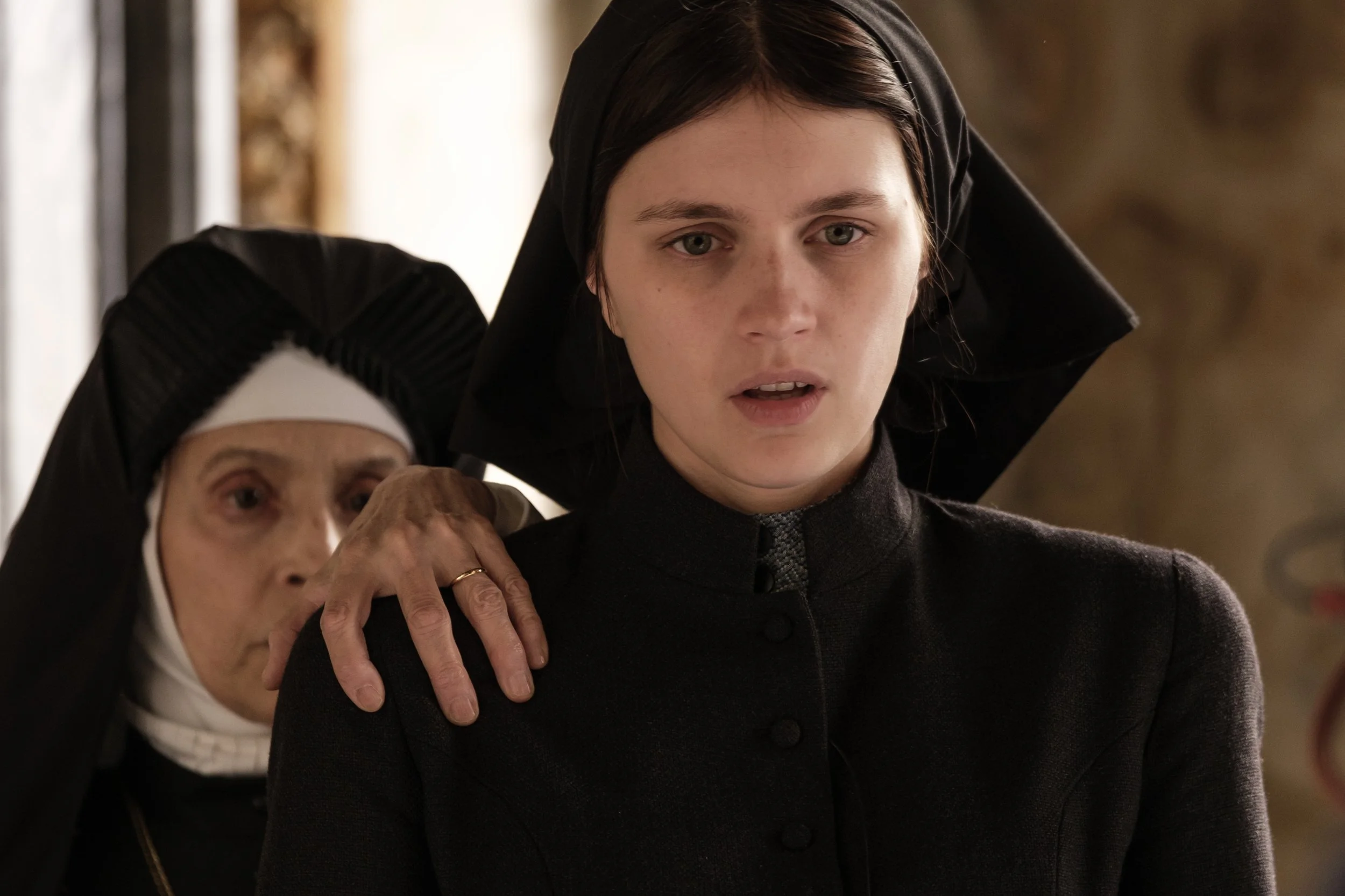Review: 'La Chimera' is a vibrant, messy story of a haunted man seeking something amid the tombs of Tuscany
The past is ever-present for the characters in director Alice Rohrwacher’s “La Chimera,” a grandly raucous and sometimes melancholy drama about life and death and the regrets and joys in between.
Some of what we learn about our haunted protagonist, an Englishman named Arthur (played by Josh O’Connor), comes out in small doses — but to summarize, he’s just returning from prison, for reasons that eventually become apparent, to Tuscany. He finds refuge with a former benefactor, Signora Flora (Isabella Rossellini), an opera tutor who rambles around in a rundown mansion that her gaggle of busybody daughters who visit occasionally would like her to sell.
Arthur soon reunites with his old friends, a boisterous bunch who drink, smoke and sing songs about their crimes. They are “tombaroli,” finding and breaking into Etruscan tombs and plundering the pottery and other items hidden within.
Arthur is the key to the operation, because he has the gift for finding such tombs — using a divining rod and a sixth sense that overcomes him when he’s on top of one. And, unlike his pals, he’s not really in it for the money. Arthur is on a quest for … well, that’s not immediately clear, though it somehow involves the woman who got away, Beniamina (Tile Yara Vianello), who Rohrwacher shows us in flashbacks and symbolizes with a length of red yarn — a metaphor for a lost connection.
Someone starts to get past Arthur’s wall of heartbreak. She’s Italia (played by Carol Duarte), a would-be opera student who’s living in Flora’s home and — as part of the old woman’s rather manipulative agreement — gets singing lessons in exchange for cleaning and ironing. Italia is keeping a secret from Flora, and when it’s discovered it threatens to disrupt their already disordered lives.
O’Connor, known to fans of “The Crown” as the young Prince Charles, plays Arthur like a ghost who doesn’t know he’s dead yet — wafting through these Tuscan vistas and Etruscan tombs, until Italia’s exuberant spirit comes close to pulling him back into life. He’s a necessary anchor that keeps what could be an overabundance of Italian whimsy from carrying the movie away like a hot-air balloon.
Rohrwacher, with her writing collaborators Carmela Covino and Marco Pettenello, places in a Tuscany that seems built on ruins. The cars, the houses and certainly the characters seem to be held together by spit, baling wire, hopeful thoughts and forward momentum. At one point, Italia remarks about a living arrangement: “It’s a temporary situation. Life is temporary.” That’s the guiding force behind “La Chimera,” a sense that we’re all making this life up as we go, and it’s the people we choose to be with who make it worth living.
——
‘La Chimera’
★★★1/2
Opens Friday, April 12, at the Broadway Centre Cinemas (Salt Lake City). Not rated, but probably PG-13 for some violence and language. Running time: 130 minutes; in English and Italian with subtitles.







